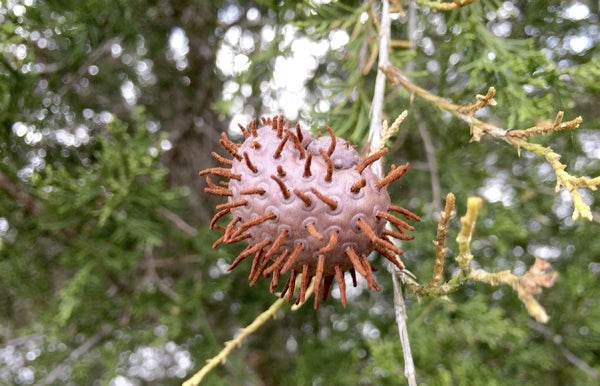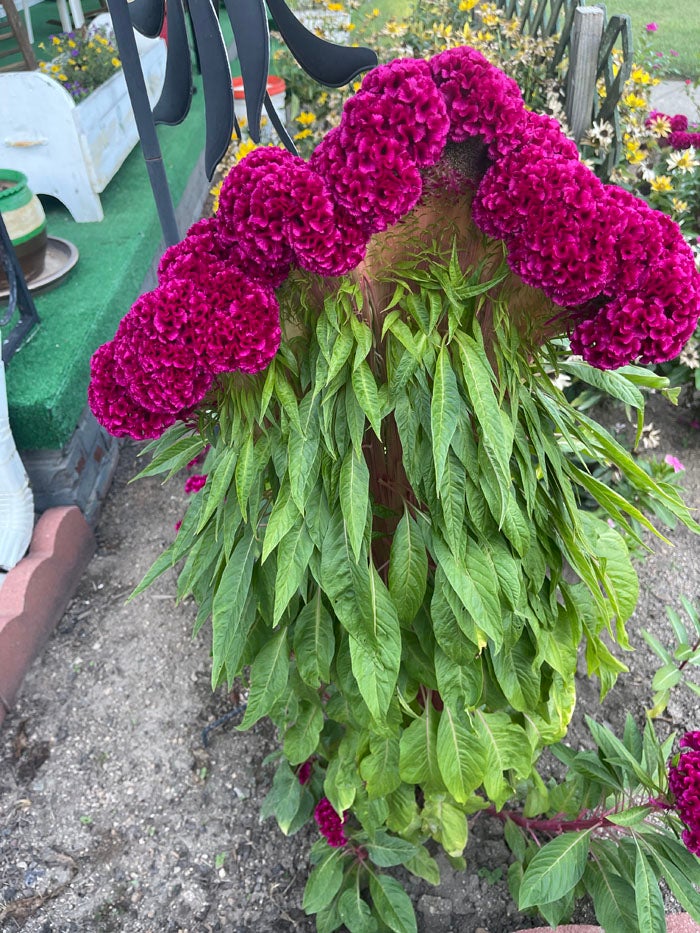Danelle Cutting: Beware of the rusts
Published 12:00 am Friday, April 17, 2015

- Cooperative Extension This is not a space alien feeding on a tree, it's a cedar apple rust gall.
By Danelle Cutting
Rowan Cooperative Extension
The past few days have been very moist and humid. This is always a perfect storm for disease and calls have already come in concerning current and previous year diseases.
There are a few issues going on right now that readers need to be aware of and prepare against. Some of the diseases that are active now is cedar apple rust (CAR) and quince rust (QR). They are two different fungal diseases but they occur every year on apples with the eastern red cedar being the alternative host.
Moist, humid conditions during the spring help initiate the production of the spores (and we have had perfect conditions already). The spores are produced on unusual structures called telia; the telia can dry and rehydrate as the weather changes.
The spores are airborne and are blown through the wind and during storms, which then gives the spores the opportunity to infect apples. Since most of the infection coincides with tight clusters through petal fall it can even cause leaf infections. Temperature plays a huge role in the instances of infection, the optimum infection temperature is in between 55 and 65 degrees with little infection happening below 55.
Cedar apple rust can attack leaves and fruit and quince rust only infects the fruit. If the apple trees are infected, it can present unsightly fruit and leaves. If the cedar apple rust infection is too bad, the apple trees can be completely defoliated.
The symptoms on the apple trees are yellow/orange spots on the upper portion of the leaves. Then during late summer, tube like structures are produced on the bottom of the leaf. The fruit infected with quince rust can be misshapen or show necrotic tissue or green lesions. Most of the fruit that are infected with quince rust drop before one can harvest.
There are a few cultural and chemical controls one can do to help reduce the instances of cedar apple rust and quince rust. For most orchards, we try to remove cedars within a half mile radius. You will not completely eradicate the issue by removal of cedars, but it can reduce the instances of disease.
Selecting disease-resistant varieties can also reduce the instances of cedar apple rust and quince rust, but some of the varieties may not be as flavorful. Gala, Braeburn and Jonagold are very susceptible to cedar apple rust. Delicious varieties are more susceptible to quince rust. If chemical control is needed, use appropriate fungicides during the pre-pink stage through the petal fall.
For more information on how to control cedar apple rust and quince rust, call your local Cooperative Extension agent, Danelle Cutting, at 704-216-8970.
Or visit: http://www.ces.ncsu.edu/fletcher/programs/apple/plantpath/CARfact.html




